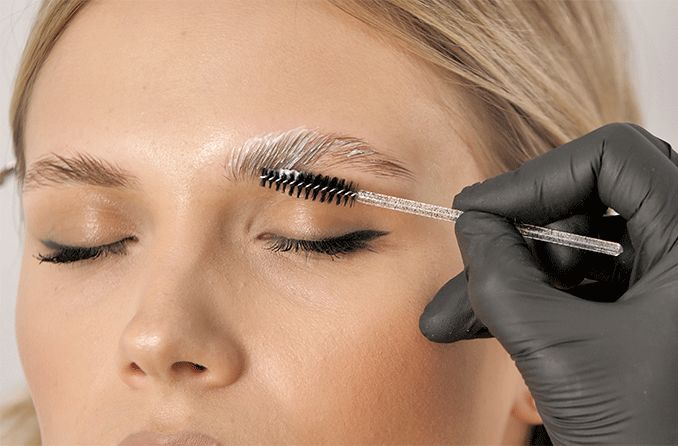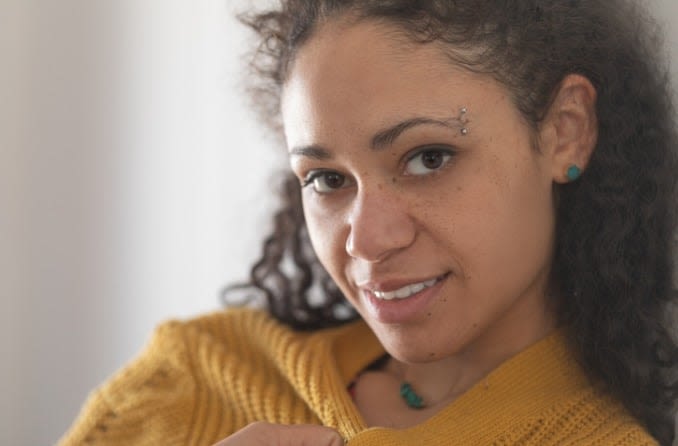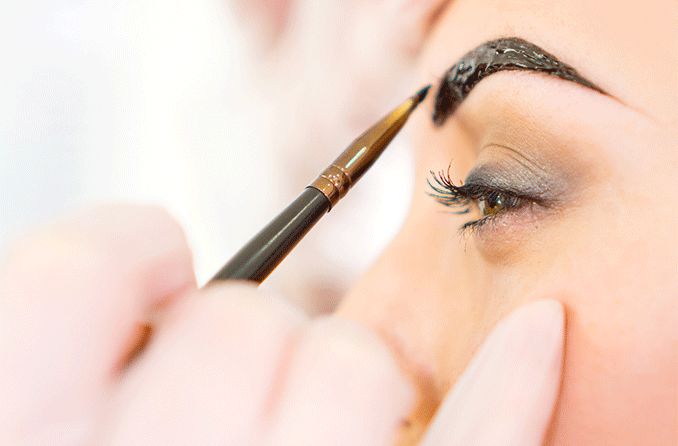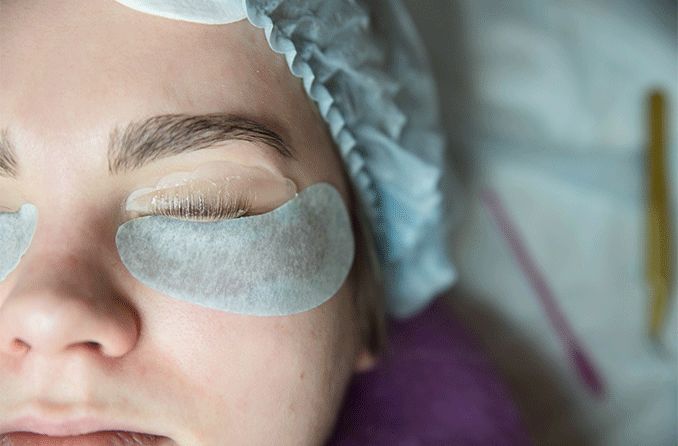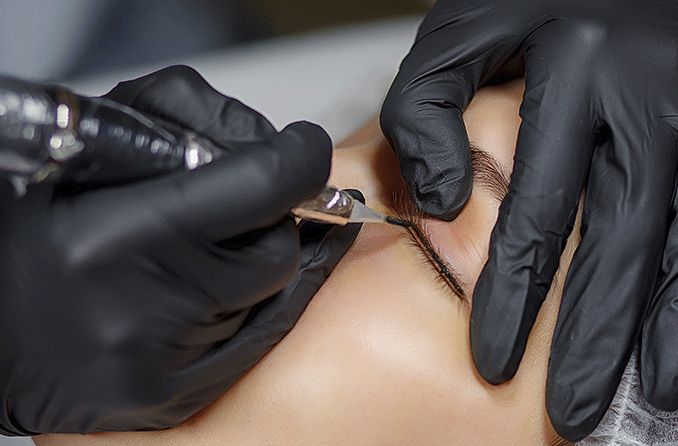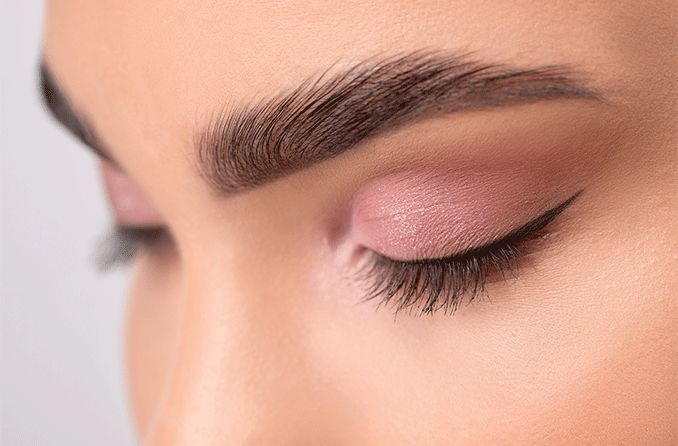- Eyebrow threading is an ancient Eastern technique for shaping and removing unwanted hair on the face and around the eyebrows. Though it originated in India, it is now practiced around the world by people of all cultures. Threading is performed with a simple cotton thread; an aesthetician holds one end of the thread in their mouth to keep it anchored and loops the other end around various hair follicles on a client’s face and pulls them out.
- The looped end of the thread is rapidly rotated to pull each hair from the hair follicle, removing hair from under the skin’s surface. Before a threading session begins, the eyebrows are cleaned with an astringent-soaked cotton ball.
- Although eyebrow threading is a popular and generally safe cosmetic procedure, it does have certain risks for the skin such as irritation, infection and hyperpigmentation.
- SEE RELATED: Eyebrow tinting
Eyebrow threading vs. eyebrow waxing
- Both eyebrow threading and waxing can effectively remove unwanted hair, providing flattering and lasting results. The procedures are both performed quickly, and trained professionals can provide you with a shape that is flattering to your unique features.
- Unlike traditional eyebrow waxing that uses warm wax and special fabric strips for removal, threading only requires a cotton thread. This may be favorable for those who are sensitive to certain chemicals used in wax, or the escalated friction that comes with ripping wax and hair off near the eyes.
- Many claim that results for both types can be enjoyed for up to five weeks per session, but this can depend on the rate at which your hair grows back among other factors.
- Other types of hair removal include:
- Sugar waxing (sugaring)
- Laser hair removal
- Depilatories
- Shaving
- Electrolysis
- Tweezing
Is eyebrow threading painful?
- Everyone’s pain tolerance is different. Some report that threading is unpleasant, while others don’t mind the hassle of the pulling and tugging that comes with it.
- During the procedure, an aesthetician removes multiple hairs at a time with the use of a cotton thread, and you may be asked to cover your eyes as it takes place, all of which can be uncomfortable. If you are nervous about getting your eyebrows threaded, let your technician know so that they can try to make you feel more comfortable during the process.
- Complications can also occur with eyebrow threading after it takes place. You may experience irritation or even a more serious reaction. Mild irritation may be treated with aloe vera or other eye-safe products, but check with your doctor before using them to ensure they are safe.
- SEE RELATED: What is microblading and how long does it last?
Can eyebrow threading cause infection?
- Skin around the eyes is sensitive in nature, which is why complications such as irritation after a threading procedure are so common. However, more severe conditions such as infections and allergic reactions can occur in some people.
- According to numerous medical reports, there are some specific conditions that can occur after an eyebrow threading session. These include:
- Acute erythema – a reaction on the skin that can cause a rash of small spots that may turn into larger patches
- Hyperpigmentation – dark patches on the skin
- Hypopigmentation – light patches on the skin
- Folliculitis – inflammation of the hair follicles
- Pseudofolliculitis – inflammation and bumps on the skin, similar to razor bumps
- Bullous impetigo – a bacterial infection caused by Staphylococcus aureus
- Verruca plana – flat, flesh-colored warts
- Molluscum contagiosum (MC) – a viral infection that causes small, raised bumps on the skin
- Some reactions can develop due to sensitive skin, while others may be a result of unsanitary conditions during your eyebrow threading session. It’s important to take note of the cleanliness and professionalism of the environment where you plan to receive your service before sitting down (and if anything makes you uncomfortable, it’s OK to leave without going through with it).
- Treatment for the above conditions depends on their severity. See a doctor if you have a reaction or persistent irritation after having your eyebrows threaded to prevent conditions from worsening.
Advantages and disadvantages of threading
- Like all cosmetic procedures, there are certain pros and cons of eyebrow threading. From cost to the upkeep of your eyebrows, here are some things to consider before scheduling an appointment.
What are the advantages of eyebrow threading?
- Cost is often affordable, ranging from $15 to $45 per service (depending on where you live). Some salons also offer discounts for students, seniors and veterans.
- Results can last up to five weeks.
- The procedure itself is brief.
- No chemicals are involved, which can be more suitable than waxing for people with sensitive and/or acne-prone skin.
What are the disadvantages of eyebrow threading?
- There is a risk of having a skin reaction or developing an infection.
- It can be tedious to keep up with regular threading if your hair grows back quickly.
- The process can be uncomfortable for some.
- If you don’t live in a major city, threading services and salons may be difficult to find.
The outlook
- Eyebrow threading is a quick and precise procedure that can provide lasting and flattering results for your brows. It can cause skin reactions and infections for some however, so speak with the aesthetician performing the service if you have any concerns.
- Should an infection or reaction develop after your procedure, don’t hesitate to contact a doctor. What may start as minor irritation or tiny bumps can turn into more serious conditions if not treated promptly.
- READ NEXT: Brow lamination
What is eyebrow threading?
Page published on July 27, 2021
Page published on July 27, 2021
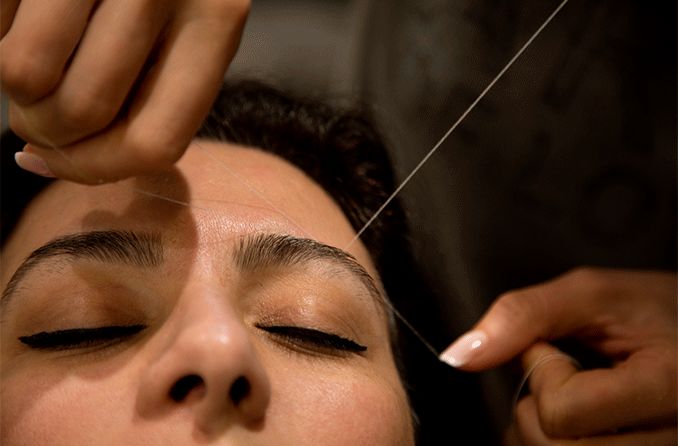
More Articles

